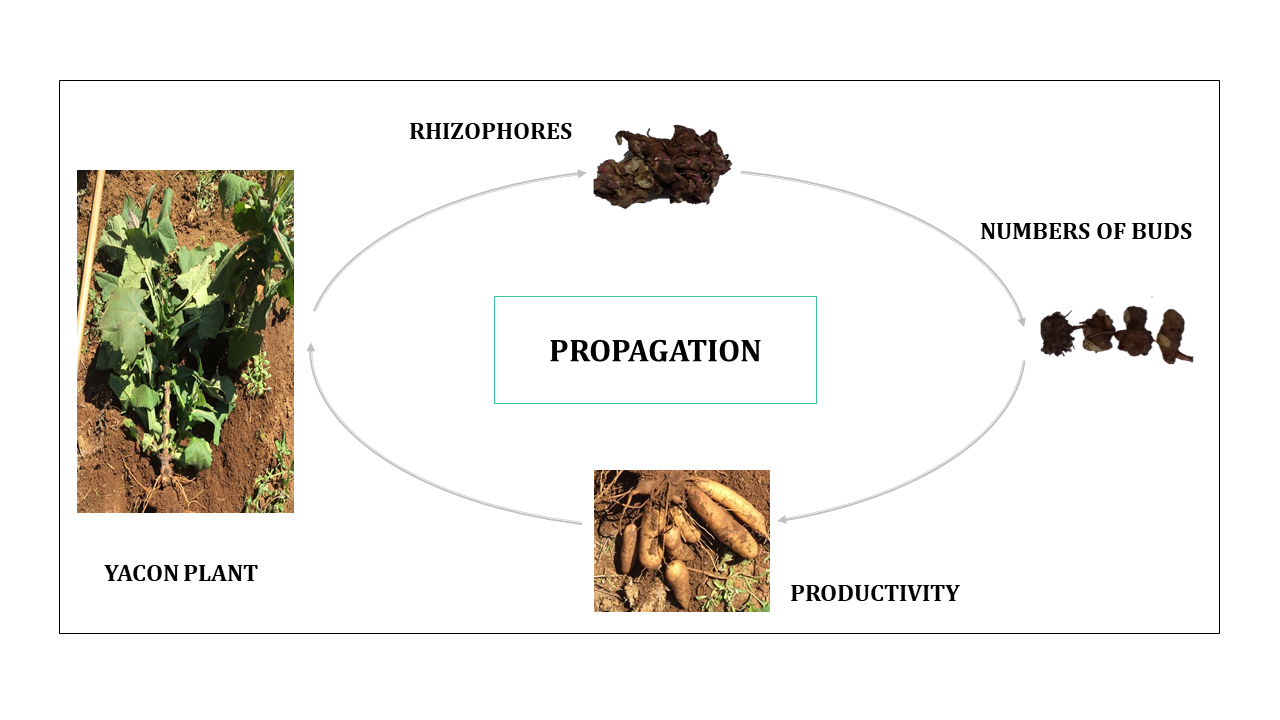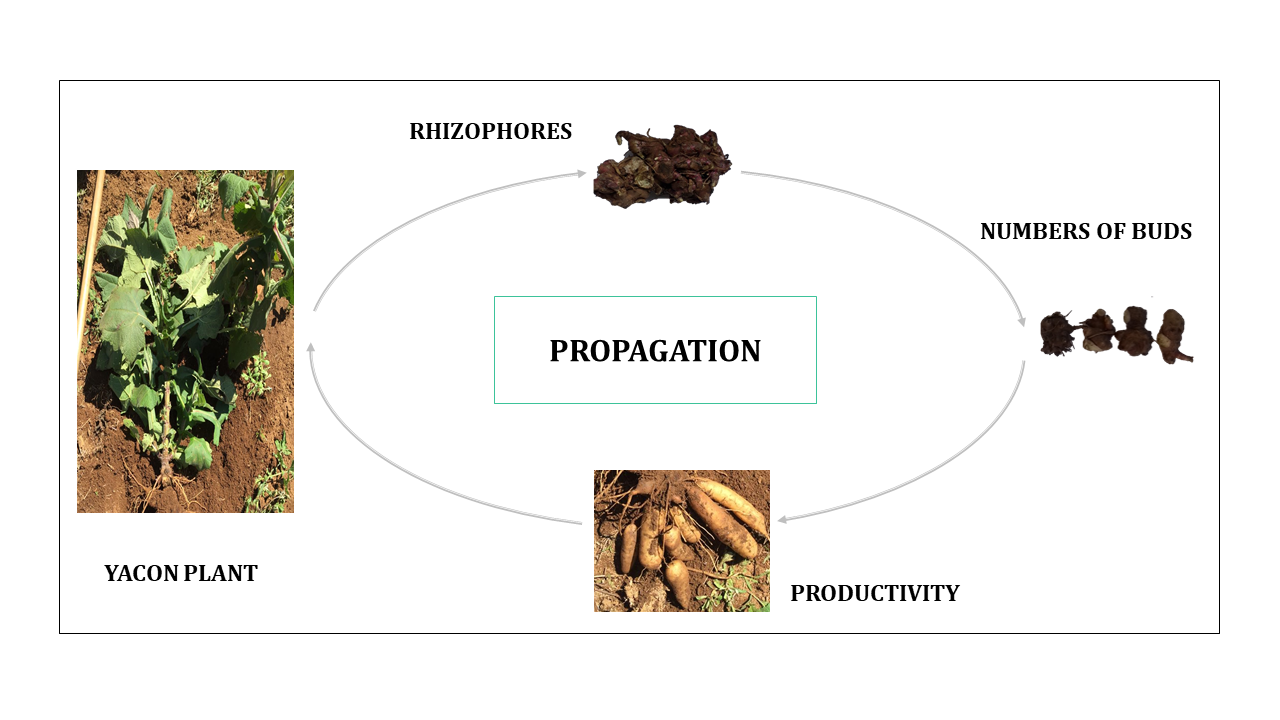Yacon (Smallanthus sonchifolius), propagation from rhizophores with different numbers of buds
Palabras clave:
asexual, Polymnia sonchifolia, propágulo, producción, Smallanthus sonchifoliusResumen

Yacon (Smallanthus sonchifolius) is a plant of Andean origin currently cultivated and consumed in several parts of the world for having numerous nutraceutical properties. An increasing interest in its cultivation demands advanced technical information on this crop, still scarce. Considering this, our study aimed to evaluate the propagation of yacon by rhizophores with different bud number. The experiment was conducted in two phases: the first phase was developed in a seedling nursery, using a completely randomized design with four treatments and 50 repetitions. The treatments consisted of rhizophores with: one to two buds (T1), three to four buds (T2), five to six buds (T3), and seven to eight buds (T4). The second phase was performed in the field with random blocks, four treatments, four repetitions, and the same treatments of the first phase. The following morphological and growth characteristics were assessed: plant height, stem diameter, number of leaves, number of stems per plant, Dickson quality index (DQI), leaf area, leaf dry mass, rhizophores, tuberous root, and productivity. The following physiological features were also analyzed: chlorophyll content (FCI – Falker chlorophyll index), net carbon assimilation rate, leaf transpiration, stomatal conductance, internal carbon concentration, water use efficiency and instantaneous carboxylation efficiency. Seedlings from rhizophores with three to four buds presented the best morphological and growth characteristics, DQI = 0.47 and good performance in the field. In addition, the plants originated from this material (rhizophores with three to four buds) showed greater accumulation of dry matter in the aerial part and tuberous roots, and consequently higher productivity in fresh tuberous roots, constituiting a suitable propagation form for the cultivation of yacon.
Highlights:
- Seedlings from rhizophores with three to four buds presented the best morphological and growth characteristics.
- The results indicate differences in photosynthetic capacity among seedlings.
- Possibility of estimating the CO2 assimilation in yacon plants through chlorophyll contents, determined by "ClorofiLOG" (model FL1030, Falker), a device that has lower cost and simple handling than other photosynthesis analyzers, like IRGA Licor 6400XT, representing a significant methodological contribution.
- Study shows that the number of buds in the yacon propagule (rhizophores) has a direct influence, from seedling phase to final production and that their weight should not be a factor for selection.
Descargas

Descargas
Publicado
Cómo citar
Número
Sección
Licencia
Aquellos autores/as que tengan publicaciones con esta revista, aceptan las Políticas Editoriales.










.jpg)




